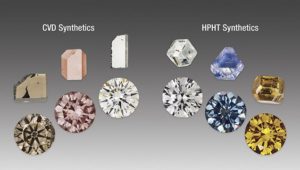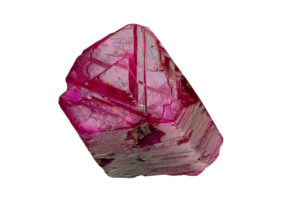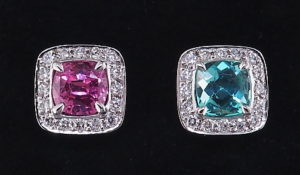Over the last 10 years demand for platinum jewellery has surged dramatically. I am always asked by clients, what is the difference between platinum and white gold and their benefits at design stage for bridal, anniversary or lifestyle jewellery. To summarise, I will explain the properties of both metals including purity, weight, colour, durability and pricing.
Purity – Platinum is a natural white metal and for use in the manufacturing of jewellery is alloyed with 5/10% of other metal including iridium or ruthenium which hardens metal. A platinum hallmark has a fineness of 900 to 950 parts and 5/10% of other alloys. White gold is an alloy of yellow gold and white metal alloys include silver, zinc or palladium. For manufacturing 18 carat white gold jewellery, the white colour is achieved by a careful blend of the alloying metals, which bleach the yellow of pure gold. Hallmarked 18 carat white gold has a fineness of 750 parts and 25% of other alloys. For purity of metal, Platinum therefore has a 90/95% fineness compared to 75% fineness of white gold.
Weight – Platinum is a denser metal than 18 carat white gold. If you take a like for like specification on a wedding ring, for example 4mm width with a 2mm height of metal, the platinum will be up to 30% heavier than 18 carat white gold in gramme weight. This will make a difference in pricing which is why platinum wedding rings are more expensive than 18carat white gold wedding rings.
Colour – Both metals in manufactured jewellery appear whitish grey in colour and are often indistinguishable if placed side by side. This is deceptive to the untrained eye. The alloys in 18 carat white gold create an off white, light yellow colour in manufactured jewellery. To create a high lustre finish, jewellers rhodium plate white gold jewellery which looks attractive in theshort term but will wear away over 2/3 years and will require rhodium plating again. With platinum, no plating is required as the metal has a unique white, grey colour which becomes greyer over time.
Durability – Both metals are soft and have various alloying to harden both metals for jewellery manufacture. However, platinum is arguably termed a soft metal due to 5/10% of alloy where 18k white gold has 25% alloyed metal to harden metal. Platinum being denser, is more durable than 18 carat white gold and offers a perfect secure setting for diamonds and gemstones than 18 carat white gold. Platinum has a tighter molecular structure than 18 carat gold enabling a mirror like finish compared to a high finish on gold. Yet both metals do scratch and react to knocks with platinum displacing due to its structure and dependent on knock may not return to the original state once repaired. 18 carat white gold, on other hand when knocked has more spring and can return more easily to its original state.
Cost – Platinum is rarer than gold and denser in weight and is also less malleable than 18k white gold incurring more labour costs with jewellery manufacture. Gold has always proved a great hedge in economic climates and today is trading higher than platinum per troy ounce. With current gold pricing, both public and trade have benefited with profit with from sale of scrap gold.
So which choice would you make, platinum or 18 carat white gold jewellery?
I would suggest, if you can afford it, invest in platinum jewellery for bridal and anniversary jewellery as platinum is an ideal choice for long term daily wear. Platinum will give the diamond a clean look, add brilliance to the diamond and is optimal for setting your diamond owing to its durability and long lasting colour. However, do not wear your platinum jewellery in the gym or perform heavy chores. You need to look after your platinum jewellery with the respect it deserves, otherwise you may have a price to pay for expensive reparation.











